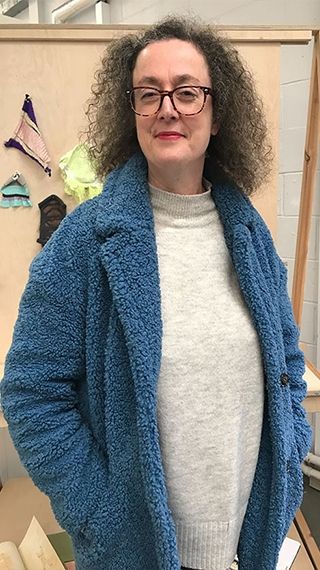
'We want to be sustainable - but barriers still exist'
'We want to be sustainable - but barriers still exist'
Karina Thomas, Senior Lecturer in BA (Hons) Textile Design, says sustainability issues and working for the benefit of the environment are a growing part of the curriculum - but market forces and a lack of materials are proving barriers for students.

Here Karina explains why:
How are we embedding environmental issues in to our Textile Design course?
We have invited key speakers on sustainability to talk on the subject, including Alice Wilby from A Novel Approach, a sustainable fashion styling company, and Rowan Mersh, an artist who works with found objects. Our students have also been invited to attend two conferences on the subject in London.
We look at production methods for yarn and fabric and discuss waste and pollution as part of the curriculum. We also look at concepts such as ‘Emotion and Design’ – how attachment to objects extends their lifespan - and ‘Wabi Sabi’ – the Japanese philosophy of Beauty in Imperfection and Impermanence. This again encourages objects to be valued even when old or damaged.
How are students producing environmentally-friendly work?
We are delighted with the work of students Amy Dance and Emily Hopkins. Alongside her images on extinct species Amy is also using recyclable materials such as Pinnatex, a new sustainable fabric made from Pineapple leaf fibres, and also nettlefibre-based fabrics.
Another student, Sophie McGoldrick, is using Polyester made from recycled plastic bottles within her Surface samples, and Gemma Singleton is using images that include the theme of Biophilia (connectivity to the natural environment) in her Print collection.
Michaela Springfield, who graduated two years ago, is showing this year at the Surface Design Show with her collection of cork-based acoustic products, and Polly Redfern, who graduated three years ago, works for Nesta, an innovation foundation, on issues of sustainability.
How hard is it to be environmentally-friendly in our use of materials? Which environmentally-friendly materials are we currently using?
It is still quite hard to source 100% environmentally-friendly materials and the minimum quantities and prices required can be off- putting for students. Our main fabric supplier has come up with a new sustainable range but yarn for knitting is harder to source.
If we look at the top end of the fashion industry designers such as Stella McCartney are using many more sources – things like Fur-Free-Fur, Organic Cotton, Vegan Leather, and re-engineered cashmere. It is these kinds of products that are still prohibitive for us to source due to price, availability, and minimums that we will hopefully see as more available in the very near future.
How do you hope to see things progress in the next 5-10 years to make this easier?
I think market forces will dictate how things progress. Most suppliers are now working on sustainable products, and I think the landscape will be completely different in five to ten years, and I imagine most students will have a sustainable element to their work by then.
Have you noticed a change in attitude among students in recent years, with increasing numbers more environmentally-conscious?
Yes, sustainablity is often a part of a proposal, as is biophilia, himans' innate attraction to nature and natural processes. We don’t see sustainability as necessarily a visual theme as such but a materials development theme to add to the mix when designing a collection.
Do you feel any change in attitude is reflected across the fashion and clothing industry?
At a think tank level I think these issues are at the core of all debates going on with high-end designers such as Vivienne Westwood and Stella McCartney, who promote buying less and buying better alongside their materials developments.
High street brands are also bringing out more sustainable ranges and campaigns and there are many schemes for recycling old clothes.
The biggest challenge with students is that they tend to buy second hand, with many online companies becoming increasingly popular.